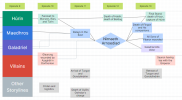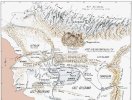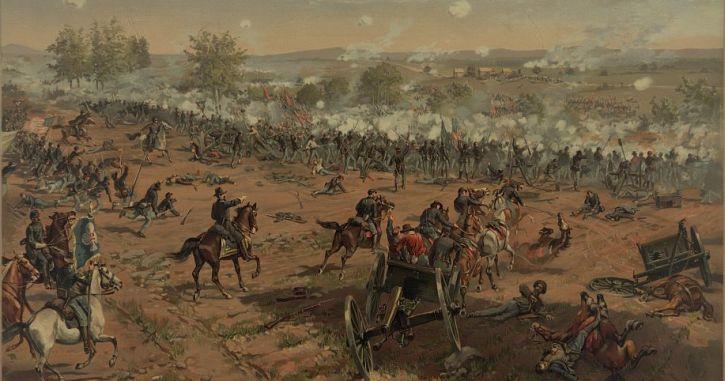Edit: Our next session will be held on Thursday March 14th at 10 PM Eastern Time.
Our topic will be planning the Nirnaeth Arnoediad, the war that will take place over the final 4 episodes of season 7.
We need to come up with the plan that the Union of Maedhros has - what do they think and hope will happen during this war? And how does that plan evolve over the course of the season with the developments?
...and then what are we going to actually show on screen? Because the Nirnaeth Arnoediad didn't go according to plan, and we need to hit the audience with ups and downs as the chances of the war shift. Leading to the death of amdir, but the birth of estel.
There are three main aspects of this to pay attention to.
The Dorthonion campaign will happen first, prior to the main engagement. This will feature the Dwarves and the dragon Glaurung.
The Western front will have the unexpected arrival of the massive army from Gondolin. And while they're waiting for the Eastern front to get their act together, there will come the taunt with Guilin's murder, and Gwindor's charge. Boldog and the balrogs will be in the Western front.
The Eastern front will have the most massive deviation from the planned battle attack. The betrayal of Uldor and his loyal supporters will destroy the siege equipment, delay the armies from moving into place, and sow general chaos, culminating in actually attacking the elven army.
And.....go!


Our topic will be planning the Nirnaeth Arnoediad, the war that will take place over the final 4 episodes of season 7.
We need to come up with the plan that the Union of Maedhros has - what do they think and hope will happen during this war? And how does that plan evolve over the course of the season with the developments?
...and then what are we going to actually show on screen? Because the Nirnaeth Arnoediad didn't go according to plan, and we need to hit the audience with ups and downs as the chances of the war shift. Leading to the death of amdir, but the birth of estel.
There are three main aspects of this to pay attention to.
The Dorthonion campaign will happen first, prior to the main engagement. This will feature the Dwarves and the dragon Glaurung.
The Western front will have the unexpected arrival of the massive army from Gondolin. And while they're waiting for the Eastern front to get their act together, there will come the taunt with Guilin's murder, and Gwindor's charge. Boldog and the balrogs will be in the Western front.
The Eastern front will have the most massive deviation from the planned battle attack. The betrayal of Uldor and his loyal supporters will destroy the siege equipment, delay the armies from moving into place, and sow general chaos, culminating in actually attacking the elven army.
And.....go!


Last edited:




